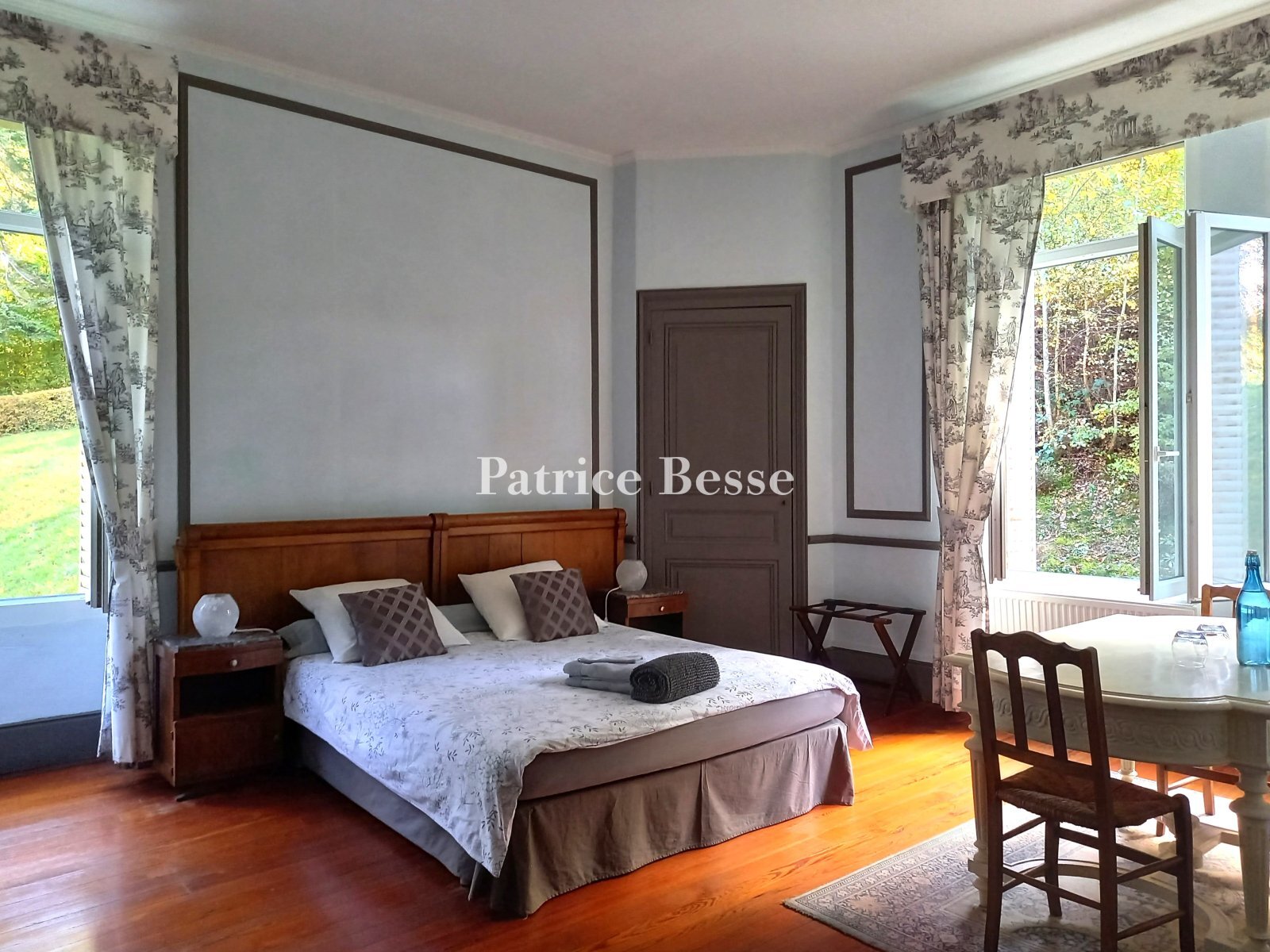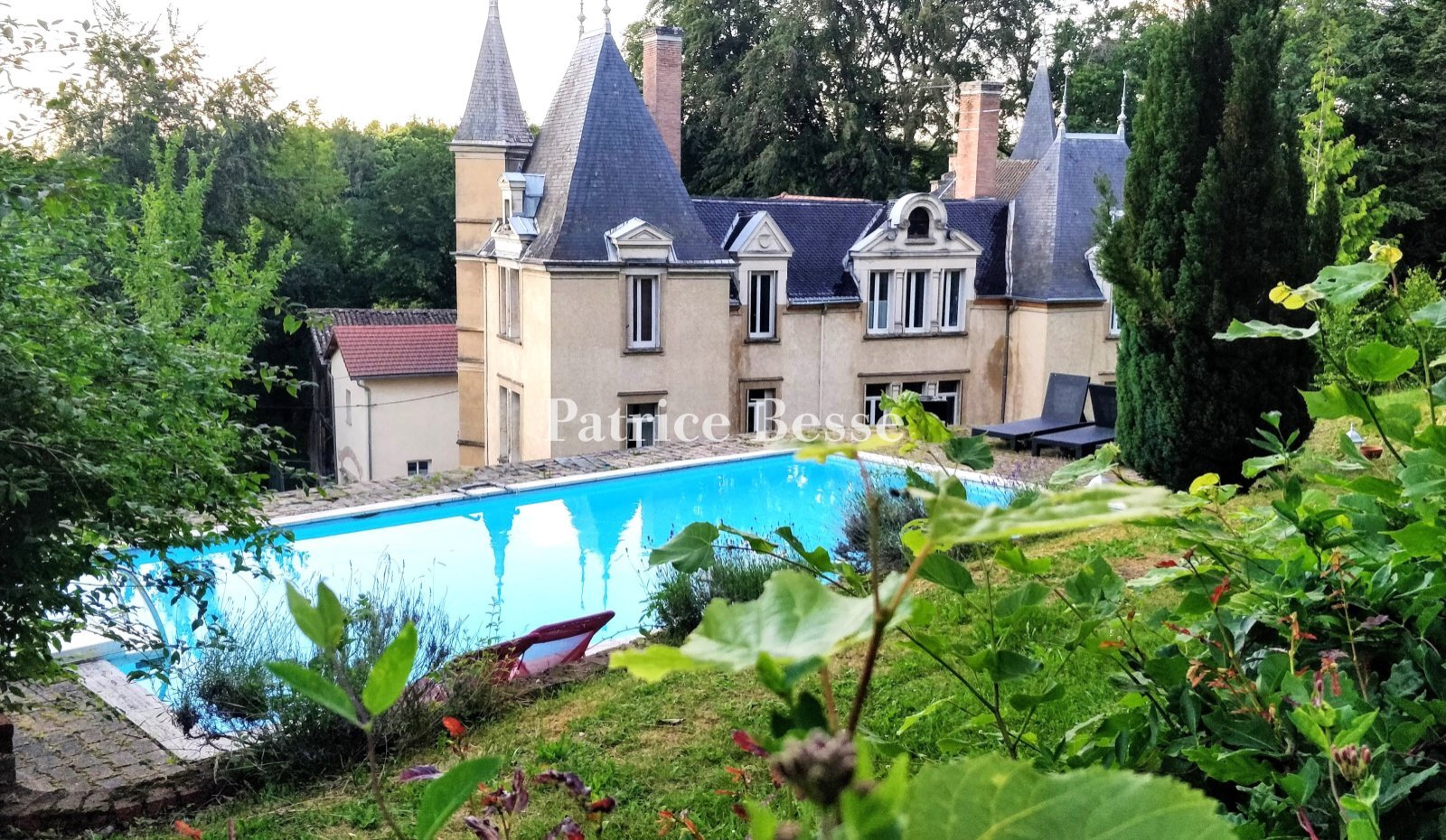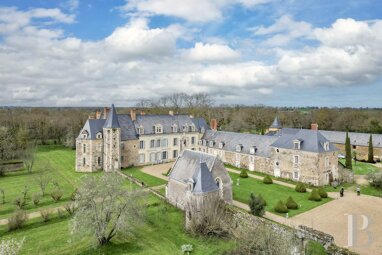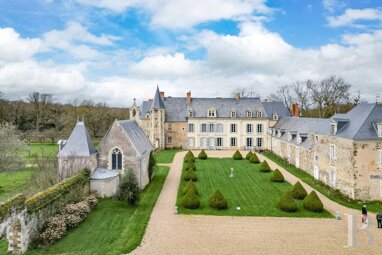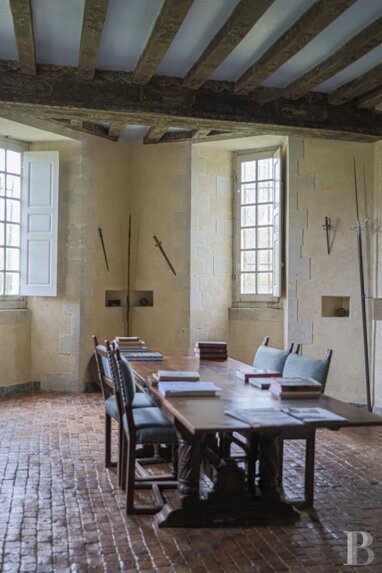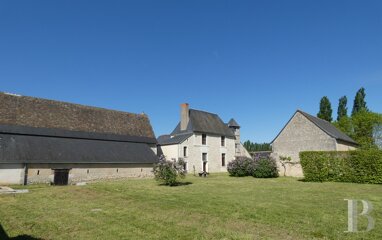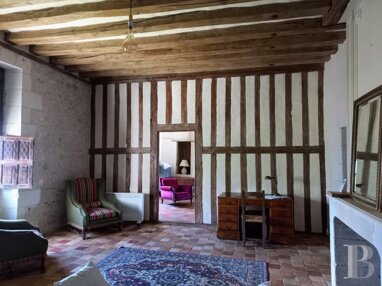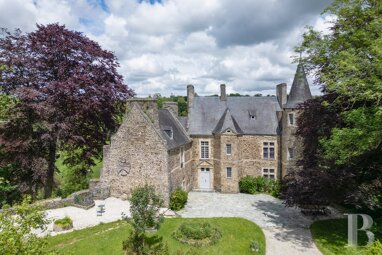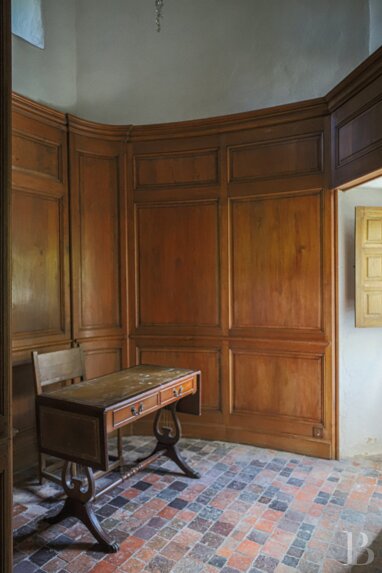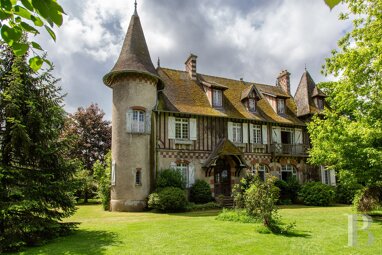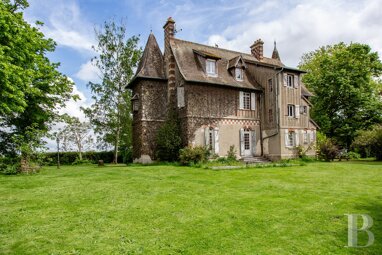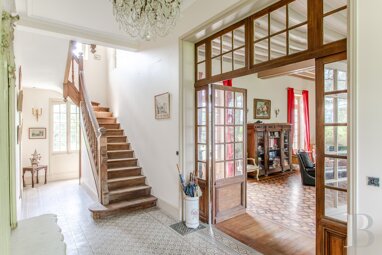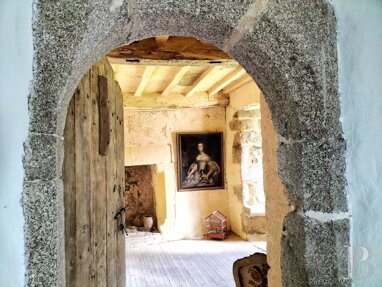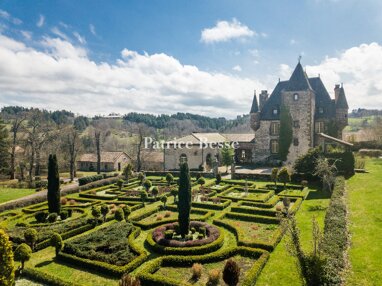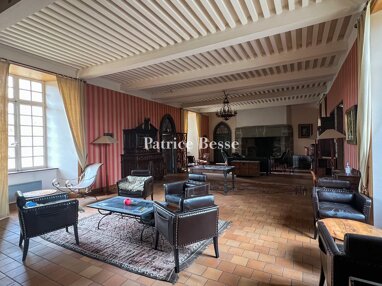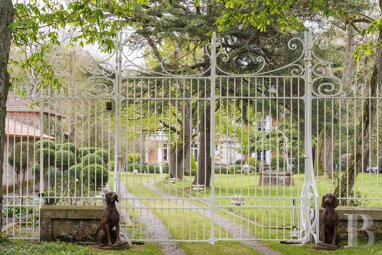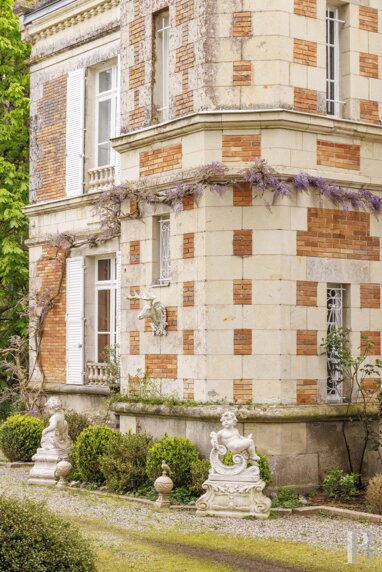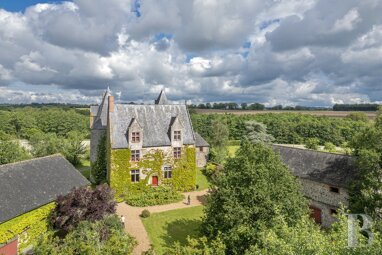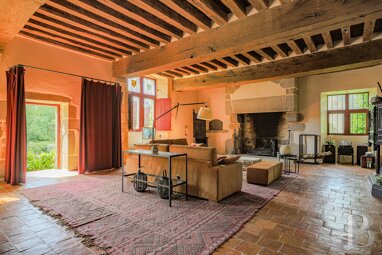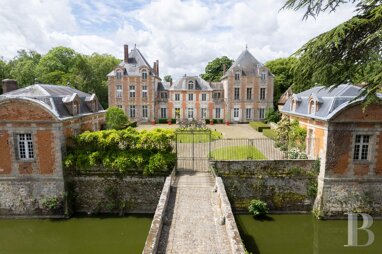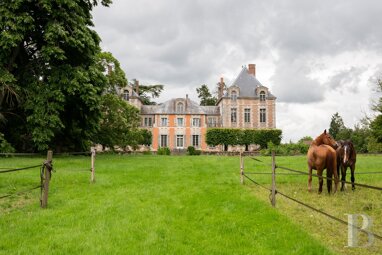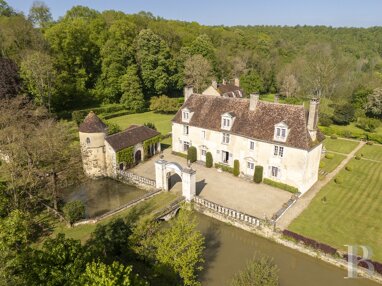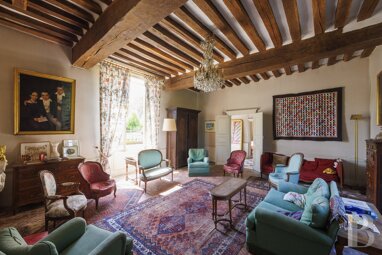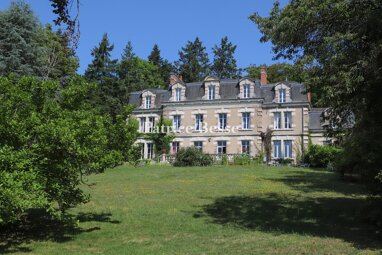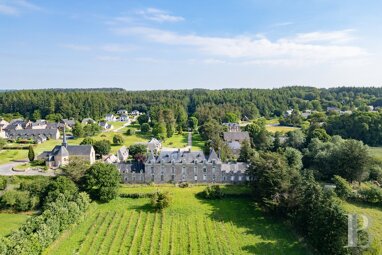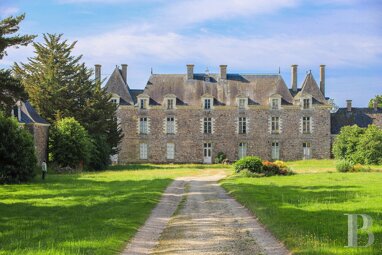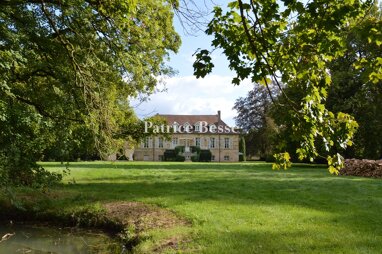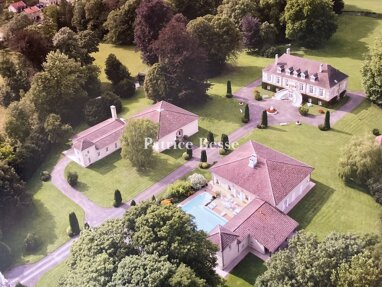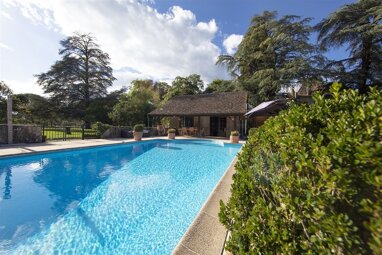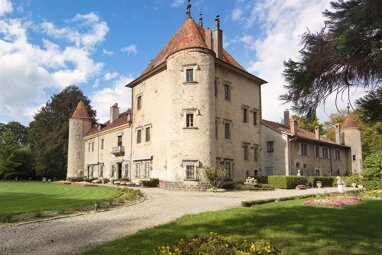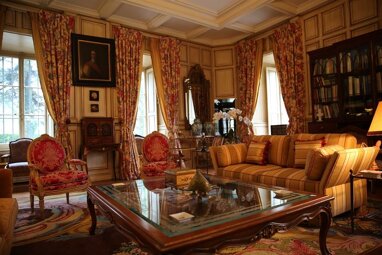A 19th century chateau with 14.5 hectares of grounds surrounded by verdant countryside in north-west Isère - ref 247583
A 19th century chateau with 14.5 hectares of grounds surrounded by verdant countryside in north-west Isère.
The property lies on a historic site in the Bas Dauphiné region, nestling between several regional nature parks, surrounded by a vast forest of 3,000 ha covering rolling hills and valleys with springs and meandering streams. The chateau stands on a hillside at an altitude of 460m.
It is ideally situated within the Lyon-Grenoble-Chambéry triangle, 50km, 75km and 80km respectively from the property. Geneva is a 1 hour 50 minute drive away. The motorways connecting to these towns can be reached in 20 minutes. It takes 40 minutes to drive to the TGV railway station and Lyon-Saint Exupéry international airport. The surrounding towns offer all the day-to-day services, facilities and shops.
This vast estate, extending over approx. 14.5ha of gently sloping, uninterrupted land, consists predominantly of woodlands. A shady driveway leads to a large gravel parking area to the north-west of the main building. It then continues towards a courtyard in front of the chateau, where the woods give way to a large clearing. A secondary path followed by a flight of steps lead to a swimming pool on a plateau overlooking the forest. On the other side, a small wooden chapel is tucked away beneath the trees.
This was originally a forest house linked to an ancient 16th century Cistercian abbey.
After the French Revolution, it was used as the home of the steward responsible for managing the national forest. In 1888, a local grandee commissioned the architect Joseph-Étienne Mallaval to build a substantial four-storey extension.
The chateau, which has undergone several periods of construction and renovation, stands on the north-eastern edge of the grounds. Its most striking external architectural features are those dating from the 19th century. The distinct, homogenous volumes of each section follow one another cascading down to the outbuilding, reflecting the different periods in which they were built. The adobe, pebble, rammed earth concrete and clinker block facades are rendered. The roofs, clad with slate, monk and nun or flat "beaver tail" tiles are in good condition; they have all been renovated, with the exception of the roof of the 19th-century main building.
Today divided into various lodgings spread over three levels, the building has a total floor area of approx. 870 m². It is currently used as tourist accommodation, benefiting from one of the most peaceful environmental areas.
The chateauThis building differs from the other sections in that it has slate hip roofs and a large number of ornate pediments and wall dormers. It is flanked by two square corner turrets rising above the edifice, with pavilion roofs and broached eaves. All of these architectural features are typical of the 19th century.
Extending over 520m² of living space, it boasts a number of spacious rooms. The garden level and first floor are dedicated to hosting guests, while the top floor forms a private flat. All the lodgings are interconnected. Essential renovation work was carried out around ten years ago. The various openings are double-glazed. Insulation has been laid in the attic space. The chateau is equipped with an oil-fired heating system, additional firewood heating and an individual sewage system.
The garden-level floor
This full-width level with windows on either side is extremely bright. The entrance is right next to the west tower. It opens onto a hall framed by two murals painted in the naïve style of the period, in reference to Douanier Rousseau. A double door opens into a sitting room with 19th century style wainscoting. An adjoining room is currently being renovated. The floors of the hall and the sitting room are Burgundy stone. Opposite is a dining room with straight strip oak flooring. The white ceiling ...



